
Analysis of trends in the incidence of acute myocardial infarction and cerebral infarction and comorbid diseases
In winter, the drop in temperature makes blood vessels more likely to constrict, which increases blood pressure and changes in blood flow, promoting the progression of arteriosclerosis. As a result, the risk of myocardial infarction and stroke increases, and it has been reported that the incidence rate is particularly high among the elderly and those with underlying diseases .
Therefore, using the MDV data, we created a ranking of the monthly trends in the number of patients with acute myocardial infarction and cerebral infarction, the number of patients by gender in 10-year age increments, and the proportion of patients with coexisting diseases by gender aged 65 and over/under .
First, we investigated the monthly trends in the number of patients with acute myocardial infarction and cerebral infarction.
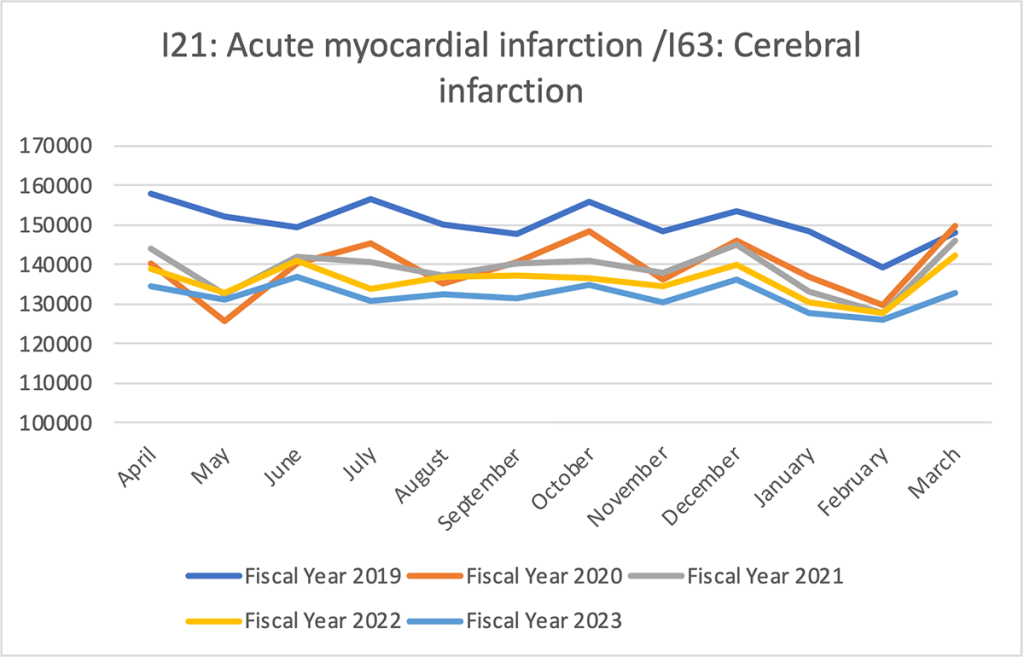
Data period : April 2019 to March 2024
Only hospitals with complete data for the specified month
Number of facilities that meet basic requirements: 377
The figures were highest in fiscal 2019, and have shown a slight downward trend in subsequent years, but seasonal fluctuations are common. In winter, there is a tendency for cases to spike from February to March of the new year . This may be due to blood pressure fluctuations caused by temperature differences, as well as stress at the end of the fiscal year and disruptions to daily rhythms. There was also a large drop in May of fiscal 2020 , which may be due to fewer opportunities for diagnosis and treatment due to the strain on emergency medical care caused by the COVID- 19 pandemic and restrictions on medical institutions accepting patients .
Next, we looked at the number of patients by gender and in 10-year age increments .
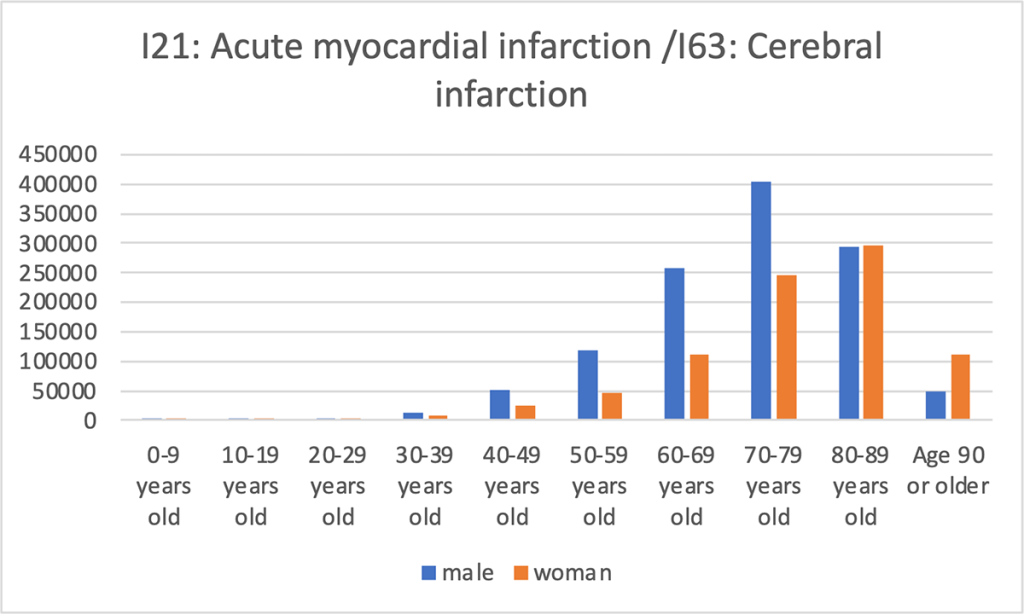
Data period: Overall ( April 2008 to November 2024 )
Number of facilities that meet basic requirements: 554
The incidence of acute myocardial infarction and cerebral infarction increases with age, increasing significantly especially after the age of 50, and then rapidly increasing in those over the age of 70. Additionally, while the incidence rate is higher in men than in women overall, the proportion of women is relatively higher in those over the age of 90, which may be influenced by the longer life expectancy of women.
Finally , we created a ranking of the proportion of patients with comorbid diseases aged 65 years or older/under 65 years old who had acute myocardial infarction/cerebral infarction by gender and compared it with the ranking of the proportion of patients with comorbid diseases aged 65 years or older/under 65 years old by gender .
Ranking of comorbid diseases in men under 65 years of age and ranking of comorbid diseases in patients with acute myocardial infarction/cerebral infarction
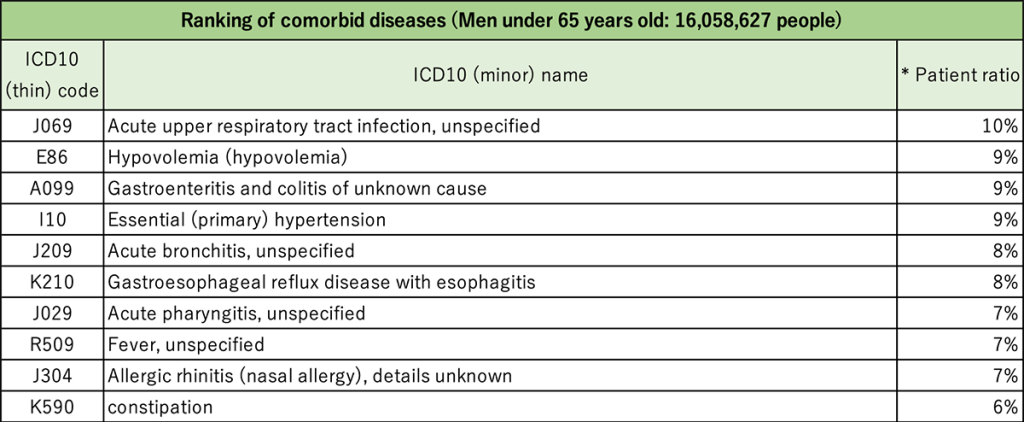
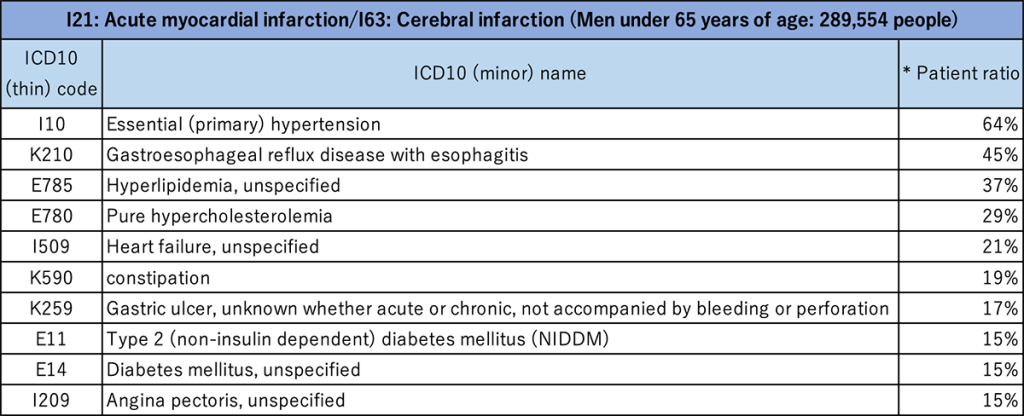
Ranking of comorbid diseases in men aged 65 and over and ranking of comorbid diseases in patients with acute myocardial infarction/cerebral infarction
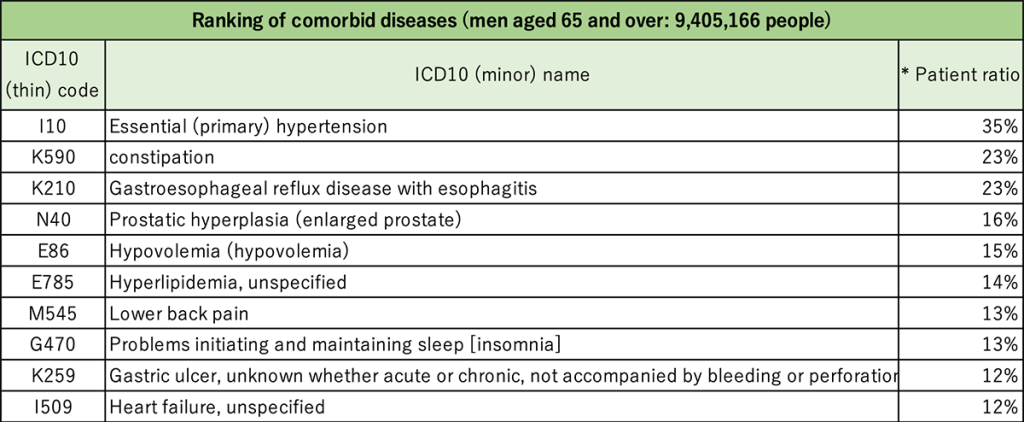
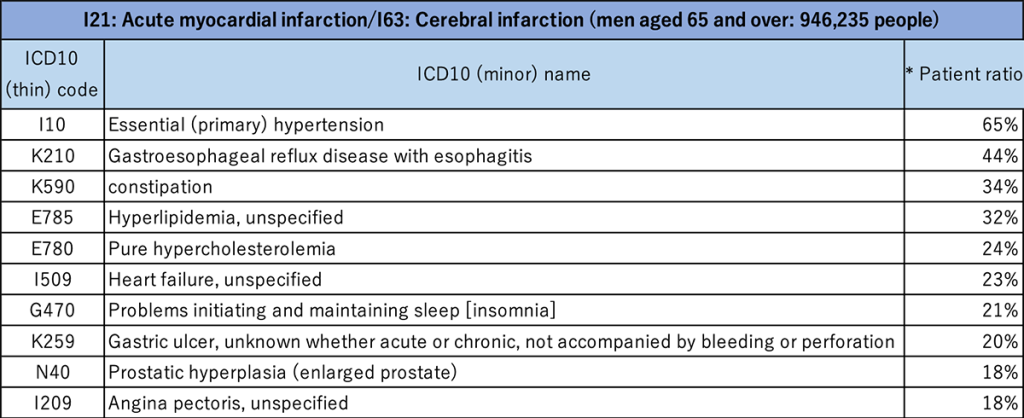
Ranking of comorbid diseases in women under 65 years of age and ranking of comorbid diseases in patients with acute myocardial infarction/cerebral infarction
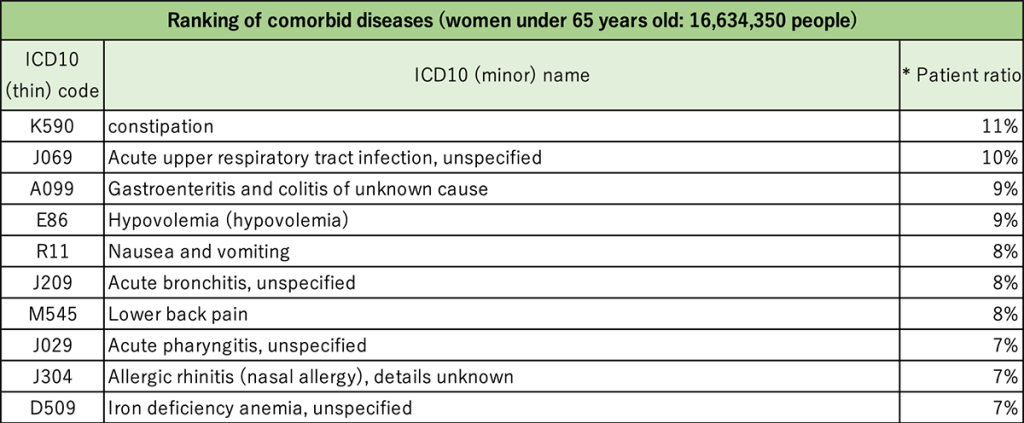
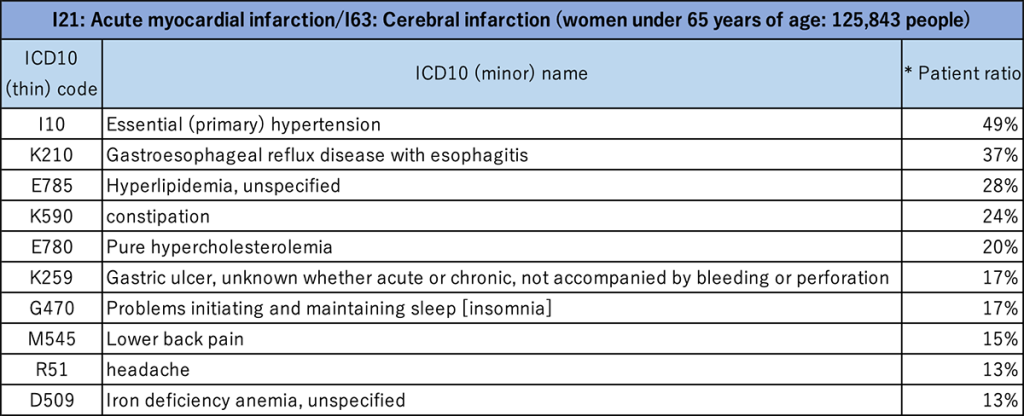
Ranking of comorbid diseases in women aged 65 and over and ranking of comorbid diseases in patients with acute myocardial infarction/cerebral infarction
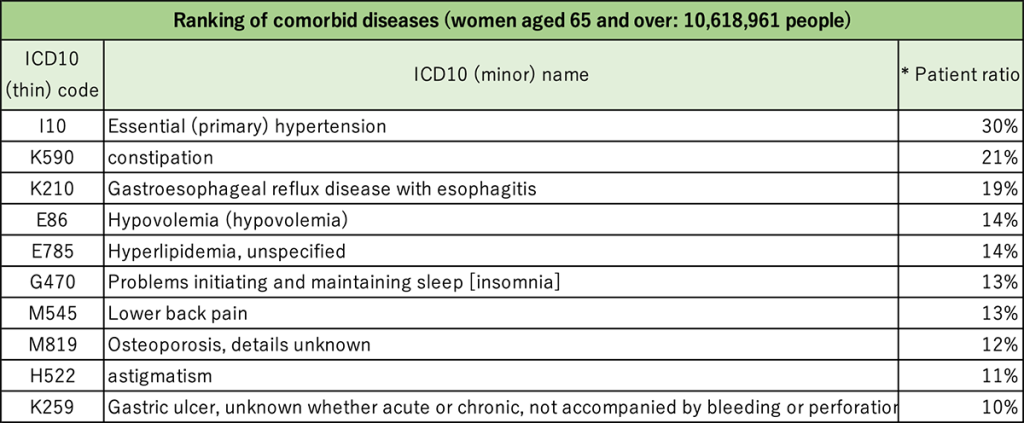
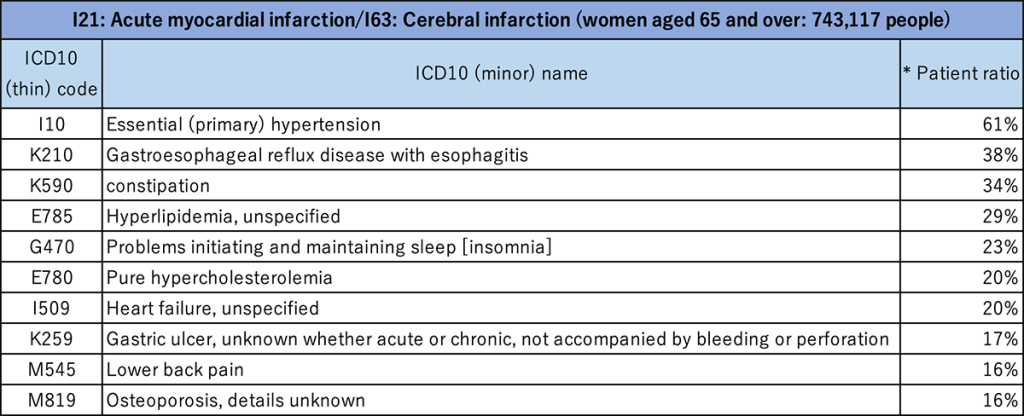
Data period: Overall ( April 2008 to November 2024 )
Patient ratio = number of patients with comorbid diseases / total number of patients (number of patients listed in the title)
In the overall ranking of comorbid diseases, trends differed by age, with acute infections (upper respiratory tract infections, gastroenteritis, etc.) prevalent among those under 65, and chronic diseases such as high blood pressure, constipation, gastroesophageal reflux disease, and dyslipidemia prevalent among those over 65. Meanwhile , in the ranking of comorbid diseases among patients with cerebral infarction and acute myocardial infarction, high blood pressure accounted for an overwhelming proportion, and cardiovascular diseases such as heart failure, hyperlipidemia, and angina pectoris tended to rank high .
Note: This article was published on March 1, 2025.
Data survey and analysis tailored to your specific requests
Databases, data analysis requests, and more.
© Medical Data Vision Co., Ltd. All Rights Reserved.





